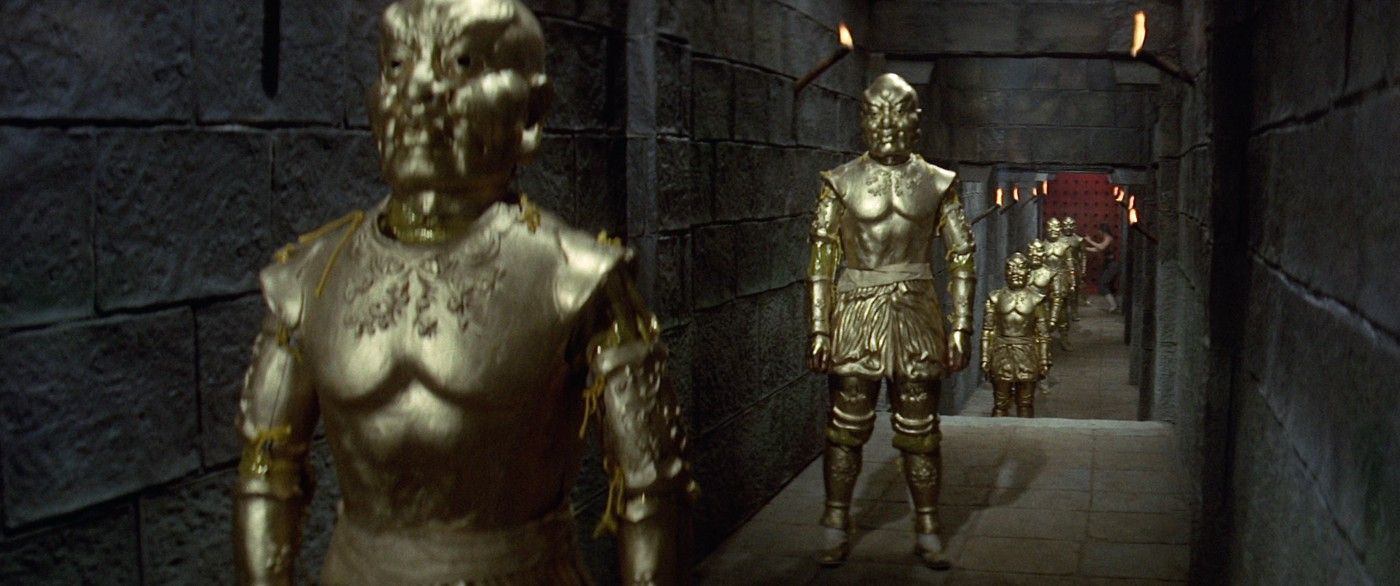Return of the 18 Bronzemen (Joseph Kuo, 1976)

Probably the most confounding entry in the excellent Joseph Kuo boxset from Eureka. Not so much because of the film, which is certainly unusual, but because it is so obviously merely the first part of a multi-film story (despite its title it is not in fact a sequel to The 18 Bronzemen). James Oliver, in the Eureka booklet (he wrote the well-informed and insightful notes for every film in the set), claims that the story was never finished and that Kuo moved on to other projects. That may be true, but there’s also a Kuo film named The Blazing Temple that seems to pick up where this one left off: with the Qing Emperor determined to destroy Shaolin for its rebellious activities. Part of the problem may be the release order: the hkmdb, generally the most reliable source for these things, has Return of the 18 Bronzemen premiering 8/14/1976 in Taiwan, and then running for a week in October of that year in Hong Kong. The Blazing Temple premiered on March 5, 1976 in Hong Kong, while The 18 Bronzemen (a totally unrelated and self-contained story) opened on New Year’s Eve 1975 in Taiwan, but two weeks after Return of the 18 Bronzemen in Hong Kong. The Blazing Temple is on YouTube and Tubi, albeit in terrible quality and dubbed only. Would have been nice to have a restored version of it (or The Mystery of Chess Boxing, for that matter) in the Eureka set instead of an amiable oddity like The Old Master.
Regardless, Return of the 18 Bronzemen is unique for another reason: it doesn’t actually have a traditional hero at all. Instead, Carter Wong plays the usurping Qing Emperor who frames his brother, the rightful heir, for murder and kills him and all the generals loyal to him to seize power. Then, hearing of rebelliousness in Shaolin, flashes back to several years before. Wandering about town in disguise, he gets in a fight with Polly Shang-kuan Ling-feng, saves a girl from bandits, then fights with her brother, who easily defeats him thanks to his Shaolin training. Wong decides to go to the Temple and learn its secrets in a mere three years. Almost all the rest of the film then is his training: learning to fight, eating an extraordinary amount of buns, failing to steal a secret manual (a plot point that seems important but never goes anywhere), and making several attempts at defeating the Bronzemen challenges, which generally involve fighting guys alternately spray-painted bronze or wearing spray-painted bronze styrofoam, or both. None of the challenges repeat from The 18 Bronzemen, except for my favorite: the one where a monk beats on him 18 times with a big metal pole and if he can still stand at the end of it, he passes.
One might expect, being familiar with the Shaolin stories of Lau Kar-leung, that Wong’s moral education would be just as important as his physical, but that’s never the case with Kuo. We already know, of course, that Wong will turn out to be a bad guy. The question left open is if that can be laid at the feet of the monks of the Temple itself. Pre-Temple Wong was a bit of a jerk, but not necessarily unredeemable. But the training he gets is entirely physical: the monks are training him to fight, not to find peace. Maybe if they had been less focused on developing ingenious ways to beat the hell out of young men, they wouldn’t have created the monstrous Emperor who would inevitably destroy them. As is the case in almost all of the Kuo films I’ve seen thus fair, the morality is far from simple, and what’s left out of the film, either by intentional structural absence or accidentally by the haphazard nature of independent film production in 1970s Taiwan, is often just as meaningful as what is in it. I suppose one could look at the Eureka boxset in this light: a necessarily incomplete object that demands further investigation.
